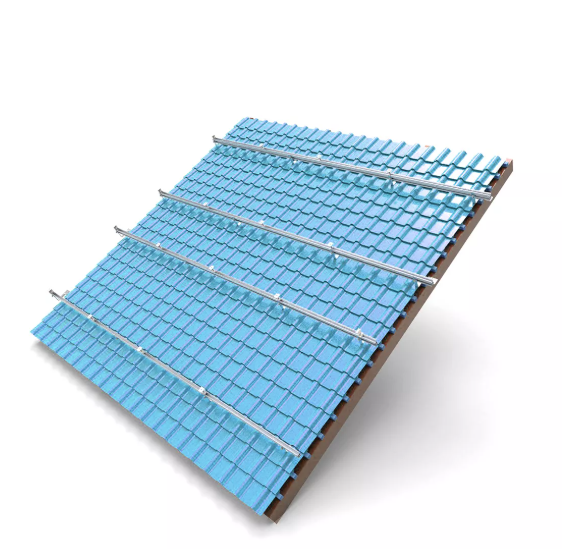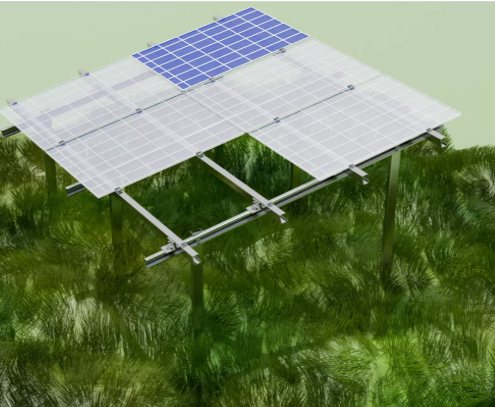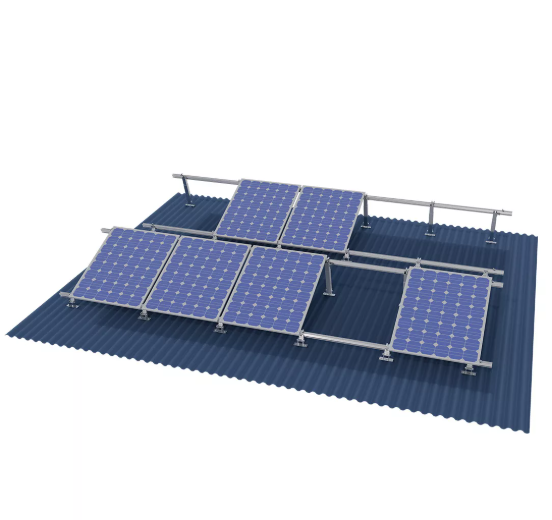


Views: 0 Author: Site Editor Publish Time: 2025-09-04 Origin: Site









As the world shifts toward renewable energy,photovoltaic (PV) power stations are becoming essential. But how can we increase their efficiency?Maximizing power generation in PV systems not only boosts energy output but also offers significant economic and environmental benefits.In this post, we’ll explore practical tips for enhancing the power generation of PV power stations. You'll learn how to improve module efficiency, optimize system design, and reduce losses.

Photovoltaic (PV) power generation uses solar energy to produce electricity. It works through the photovoltaic effect, where solar panels absorb sunlight and convert it into direct current (DC). This DC power is then transformed into alternating current (AC) by inverters, making it usable for homes or businesses.
A PV power station mainly consists of:
Solar Panels: These are the primary components that capture sunlight.
Inverters: They convert DC into AC for everyday use.
Other Equipment: Cables, distribution boxes, and monitoring systems complete the setup.
Several factors impact how efficiently a PV system generates power:
Light Conditions: The amount of sunlight hitting the panels directly influences output. Stronger sunlight means higher power production.
Temperature: Heat can reduce efficiency, so it's important to manage heat within the system.
Module Performance: High-quality panels convert sunlight more efficiently. Selecting the right type of module matters.
Installation: Proper panel orientation and tilt help maximize sunlight absorption.
System Configuration: Wiring and arrangement of components also play a key role.
To calculate how much power your system can produce, consider:
Solar Radiation: This refers to the intensity of sunlight available in your area.
Conversion Efficiency: The percentage of sunlight the system can convert into electricity.
Optimizing these factors ensures your PV power station performs at its best.
The type of PV module you choose significantly impacts your system's efficiency. There are three common types:
Monocrystalline Modules: These are highly efficient and ideal for areas where space is limited. They perform better under low light conditions and are more expensive.
Polycrystalline Modules: These are less expensive but slightly less efficient than monocrystalline ones. They’re a great choice for larger areas.
Thin-Film Modules: These are cost-effective and lightweight but generally less efficient. They’re better for larger installations where space isn’t an issue.
The key to maximizing power output lies in choosing high-efficiency modules and considering the materials used. High-quality modules ensure greater long-term performance and lower degradation rates.
Bifacial panels are designed to capture sunlight on both the front and back sides. These panels absorb light reflected from the ground or surrounding surfaces, which boosts energy generation.
Increased Efficiency: By capturing light from both sides, bifacial panels can increase overall power generation by up to 30%.
Better for Sunny Locations: They work especially well in areas with high albedo (reflective surfaces) like snow-covered ground or light-colored rooftops.
These panels provide an excellent opportunity to increase power output without needing to expand the area of your installation.
Anti-reflective coatings help improve the efficiency of PV modules by reducing the amount of sunlight that bounces off the surface. This means more sunlight is absorbed into the panel, which enhances the overall energy conversion process.
How It Works: These coatings are applied to the surface of the panels to minimize light reflection, especially in low light conditions like early morning or late afternoon.
Benefits: They increase the light absorption efficiency and improve performance during cloudy days, maximizing energy production.
As temperatures rise, the efficiency of PV modules typically drops. This is because heat increases resistance within the system, causing energy losses.
Temperature Coefficients: This is a measure of how much a module’s power output decreases for each degree rise in temperature. A typical module may lose around 0.4% to 0.5% of efficiency per degree Celsius increase.
Minimizing Heat Impact: To reduce temperature-related losses, ensure proper ventilation around your panels. Mounting panels at an angle or using cooling systems can also help manage heat and maintain performance.
By selecting the right modules and managing temperature efficiently, you can enhance your PV system’s power output.
The way your panels are positioned and tilted plays a significant role in their performance. To maximize solar exposure, the panels should face the sun directly.
Ideal Positioning: In the northern hemisphere, solar panels should face south for optimal sunlight capture. In the southern hemisphere, they should face north.
Tilt Angle: The angle of the panels should be adjusted based on your geographical location. For example, at higher latitudes, a steeper tilt is better to capture more sunlight throughout the year.
Proper orientation and tilt help ensure that your panels receive the maximum amount of sunlight, especially during peak hours.
Shading can significantly reduce the amount of energy your panels generate. Even small amounts of shade can lower efficiency by affecting the whole string of panels.
Identifying Obstructions: Check for trees, buildings, or other structures that might block sunlight during the day. Remove or trim any obstructions that cast shadows on your panels.
Proper Spacing and Layout: During installation, ensure there’s enough space between rows of panels to avoid shading as the sun moves across the sky. This is especially important if you’re installing panels in a location with limited space.
By preventing shading and ensuring proper panel layout, you can ensure maximum sunlight exposure, boosting your system’s energy output.
Inverters are crucial for converting the DC electricity generated by solar panels into usable AC power. To ensure optimal performance, choose high-efficiency inverters with MPPT (Maximum Power Point Tracking) technology.
MPPT Technology: This technology ensures that your system operates at its peak performance, adjusting input voltage to match the sunlight conditions.
Thermal Management: Inverters generate heat during operation. Proper ventilation and cooling systems can prevent overheating, which reduces efficiency. Install inverters in shaded, well-ventilated areas to keep them cool.
Ensuring efficient inverter performance is key to maximizing power generation in your system.
Regular maintenance is essential to keep your PV system running efficiently. Inspect and maintain critical components like inverters, cables, and distribution boxes to prevent performance issues.
Common Issues: Over time, cables may become loose or damaged, causing power loss. Inverters can overheat if not maintained properly, and distribution boxes can develop faults that impact the system's efficiency.
Maintenance Tips: Regularly check connections, ensure proper insulation, and clean inverters to maintain efficiency. Replacing damaged or worn-out components quickly can prevent power loss.
Taking care of your equipment ensures long-term system performance and avoids unnecessary energy loss.
Monitoring your system’s performance in real-time is crucial for identifying potential issues early and optimizing power generation. Installing a real-time monitoring system lets you track key metrics like energy production and component performance.
Predictive Analytics and AI: These tools can analyze data and predict potential failures or performance dips. By detecting anomalies early, you can take action before issues impact overall efficiency.
Benefits: Monitoring helps you make informed decisions about maintenance and upgrades, ensuring that your system runs at its maximum potential.
Data monitoring is a powerful tool for improving system efficiency and boosting power generation.
Power losses in PV systems can come from several sources. Understanding and addressing them is key to improving overall efficiency.
Shading: Even partial shading can reduce a module’s output. It affects not just the shaded panel but can decrease the efficiency of the entire string of panels.
Wiring Issues: Poor-quality or improperly sized cables increase resistance, leading to energy loss during power transmission.
Equipment Degradation: Over time, components like inverters, modules, and cables can degrade, leading to decreased performance.
To mitigate these losses, regularly inspect and maintain your system. Ensure that panels are installed without any shading and check wiring connections for wear and tear.
Cables play a big role in ensuring power flows efficiently throughout your system. Minimizing losses related to cables is crucial for maximizing power generation.
Choosing High-Quality Cables: Use low-resistance cables to reduce energy loss during transmission. High-quality cables ensure better durability and performance.
Optimizing Cable Length and Layout: Keep cable runs short and direct. Excessively long cables increase resistance and energy loss. Proper layout ensures minimal power loss.
By investing in the right cables and planning their installation carefully, you can reduce unnecessary energy loss and enhance the overall efficiency of your PV system.
Dust, dirt, and debris can accumulate on solar panels, blocking sunlight and reducing efficiency. Even a small amount of dirt can decrease the amount of power generated.
Impact on Efficiency: The more dust on the panels, the less sunlight is absorbed, which means lower energy output.
Cleaning Schedules: Clean your panels at least twice a year, or more often in dusty areas. A gentle wash with water and mild soap is typically enough.
Tips: Avoid using abrasive materials that can scratch the surface. If possible, use a soft brush or hose to remove debris.
Regular cleaning helps keep your system running efficiently and maximizes energy production.
Temperature can have a big effect on the performance of both solar panels and inverters. When things get too hot, efficiency drops.
Impact on Performance: As temperature rises, the efficiency of PV modules and inverters decreases. Overheating can lead to performance issues and even equipment failure.
Ensuring Proper Ventilation: Make sure inverters and other electrical equipment are well-ventilated. Install them in shaded areas or use cooling systems to help manage heat.
By maintaining proper temperature control, you can ensure long-term, stable performance for your PV system.
Regular inspections help detect problems early before they lead to bigger issues. Finding and fixing faults quickly prevents energy loss and keeps the system running smoothly.
Detecting Faults Early: Regular checks on your system allow you to spot issues like loose connections, damaged cables, or failing inverters.
Key Components to Inspect: Focus on inverters, cables, and connectors. These are the most common sources of failure or efficiency loss. Check for wear, corrosion, or damage and replace parts as needed.
Routine maintenance ensures your PV system continues to operate at its peak, maximizing power output over time.

Solar tracking technology helps photovoltaic (PV) systems maximize sunlight exposure by adjusting the panel's angle throughout the day.
What is Solar Tracking?: Solar trackers move PV panels to follow the sun's path, ensuring that they always face the sun directly.
Maximizing Energy Absorption: By following the sun, trackers increase the amount of sunlight captured, boosting energy output.
Benefits of Solar Trackers:
Increases system efficiency by up to 30%.
Reduces the need for additional land since panels are optimized to collect more energy.
By using solar trackers, you can enhance the overall performance of your PV system.
Energy storage systems allow excess solar energy to be stored for later use, improving efficiency and reliability.
Storing Excess Energy: When solar generation exceeds demand, stored energy can be used during cloudy days or at night, reducing reliance on the grid.
Integration with PV Systems: Energy storage integrates seamlessly, making PV systems more reliable by providing power when sunlight isn’t available.
Energy storage helps maintain a steady power supply, improving both efficiency and consistency.
Smart inverters offer advanced features that optimize power generation and system efficiency.
Features of Smart Inverters: These inverters monitor energy flow and automatically adjust settings to ensure optimal performance. They can also manage energy distribution to prevent overloading.
Real-Time Fault Detection and Energy Management: Smart inverters can detect faults early and send alerts, minimizing downtime. They also optimize energy use in real-time to maintain steady power output.
By using smart inverters, you can increase system reliability and boost overall energy production.
The design and layout of your PV system play a crucial role in its overall efficiency. A well-planned system maximizes energy production and minimizes losses.
Module Array Design and Layout: Arrange panels to avoid shading and ensure optimal sun exposure. The angle and spacing of the modules should be carefully calculated based on your location’s latitude and climate.
Optimizing System Wiring: Use the shortest, most direct wiring routes to reduce energy loss. High-quality cables with low resistance should be used, and avoid excessive connections or unnecessary bends that could affect power flow.
A well-designed PV system ensures higher efficiency and better energy yield.
Lightning strikes and electrical surges can damage your PV system if not properly protected. Proper grounding and lightning protection are essential for safety and system longevity.
Protecting Against Extreme Weather: Install surge protection devices and ensure proper grounding to prevent damage from electrical storms or lightning strikes.
Best Practices for Safety and Stability: Use high-quality grounding rods, bond all metal components, and ensure that the system’s grounding meets local electrical codes. Proper protection reduces the risk of system failure and ensures stable operation.
By implementing proper grounding and lightning protection, you protect both your equipment and your investment in the PV system.
Across the world, many photovoltaic (PV) power stations have successfully optimized their power generation. These projects show how smart design choices and efficient operations lead to higher energy output.
Case Study: The Noor Complex in Morocco: This solar power plant combines cutting-edge PV technology with solar tracking systems. As a result, it provides a significant portion of Morocco's renewable energy, showcasing how solar tracking boosts efficiency by up to 30%.
Case Study: The Tengger Desert Solar Park in China: This massive PV installation benefits from a high-efficiency module selection and a well-designed layout. It produces over 1.5 GW of energy annually, thanks to its strategic positioning and lack of shading.
Lessons Learned:
Using advanced technologies, like solar tracking and bifacial panels, significantly increases energy output.
Proper system design, including optimal panel layout and module selection, can dramatically improve efficiency.
Not every PV system performs as expected. Some projects face challenges that lead to reduced performance. Analyzing these failures provides valuable lessons for future installations.
Common Mistakes:
Poor Site Selection: Installing PV systems in areas with high shading or unfavorable weather can significantly reduce efficiency.
Inadequate Maintenance: Neglecting regular cleaning or failing to replace aging components can lead to power losses over time.
Improper System Design: Incorrect panel tilt, inadequate wiring, and subpar equipment can cause losses that lower overall performance.
Avoiding Pitfalls:
Choose sites with ample sunlight and minimal shading.
Implement regular maintenance schedules and ensure quick repairs when needed.
Plan system configurations carefully, ensuring proper spacing and angle adjustments.
By learning from these missteps, you can avoid common pitfalls and design PV systems that maximize efficiency and minimize losses.
To increase the power generation of your photovoltaic power station, focus on optimizing module efficiency, system design, and regular maintenance. Continuous monitoring and timely upgrades are crucial for long-term success.By managing temperature, reducing losses, and using advanced technologies like solar tracking and smart inverters, you can maximize energy production and ensure efficiency over time.
A: Optimizing panel orientation, using high-efficiency modules, regular cleaning, and ensuring proper temperature management can significantly improve efficiency.
A: Yes, regular maintenance, cleaning, and upgrading key components like inverters and wiring can improve efficiency without needing a full redesign.
A: Monocrystalline panels are the most efficient, followed by polycrystalline, with bifacial panels offering increased performance in sunny areas.
A: Dust reduces sunlight absorption, while high temperatures decrease module efficiency. Regular cleaning and temperature management help minimize these impacts.
A: Solar tracking systems can increase energy output by up to 30%, making them worth considering for larger home-based systems with available space.
A: Clean panels at least twice a year, or more often in areas with heavy dust or dirt accumulation, to maintain peak performance.